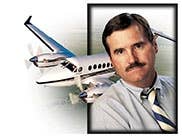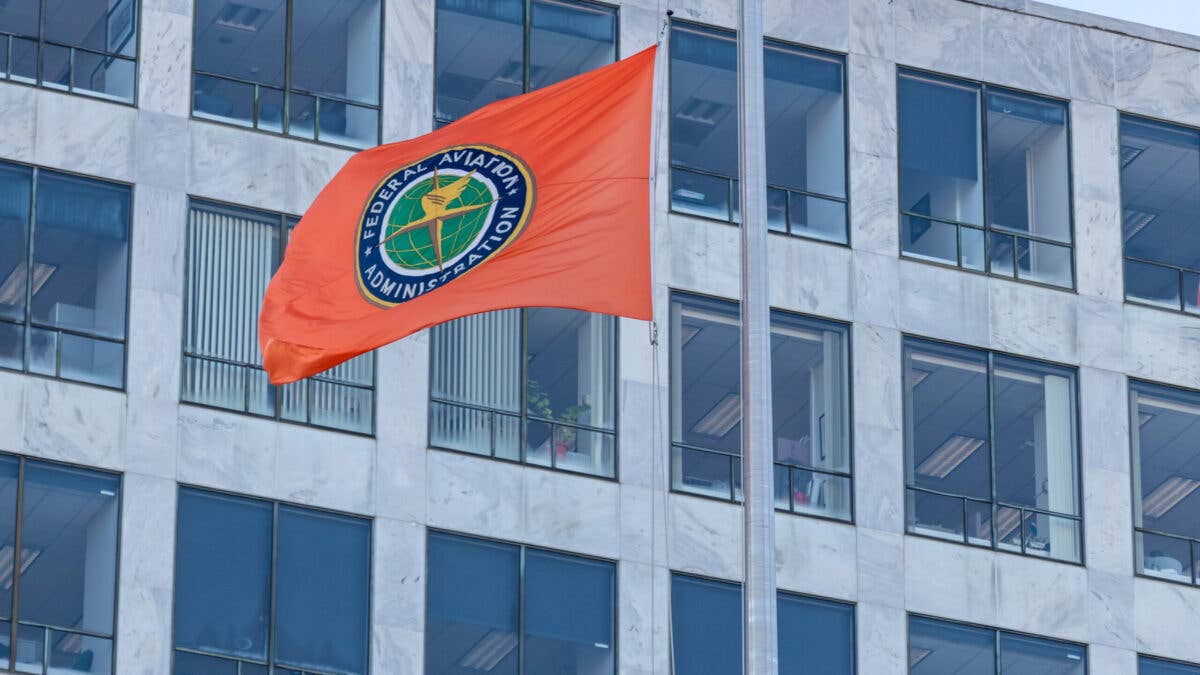
ColumnArt_Web
The most frequent complaint I hear from pilots transitioning into turbine airplanes, particularly jets, is that the simulator doesn't fly like the airplane. All say they can fly the real airplane just fine, but the simulator just isn't the same. Welcome to the world of jet pilots. It is true that a simulator, no matter how sophisticated, doesn't feel and fly exactly like the real airplane, but the harsh reality is that simulators are the yardstick to measure the qualifications of jet pilots. Every airline pilot already knows this, and business jet pilots find out almost immediately that to succeed at the top level of standardized training they must master the simulator.
This issue is particularly acute for owner-pilots who are moving up to a jet for the first time. Typically the prospect goes flying with the very skilled and accommodating demonstration pilots the airplane manufacturers hire to show off their equipment. These demo pilots are great at making everything look easy. They subtly do the hard work in the right seat so that the sales prospect can feel immediately comfortable in the left seat and do a reasonably good job flying the jet the first time out.
There is nothing nefarious going on during the sales demo flights. The demo pilot is doing his job to show the prospect just how capable and manageable the new airplane really is. The demo pilots avoid bad weather and strong winds at the surface, and keep a steady flow of advice on where to set the power and how to manage the systems.
Imagine the shock when the new jet owner-pilot gets in the simulator and is faced with doing everything for himself. The simulator instructor starts slowly with no failures or other emergencies, but the situation is so amazingly different than the demo flights that many new pilots are alarmed.
Added to that is the fact that simulators really don't fly exactly like the airplane. Actually, that's not true. The simulator really DOES fly just like the airplane, but our perceptions are different. Subtle clues we use to understand what an airplane is doing just aren't as available in the simulator as in the real thing.
Virtually all simulators at major training companies meet FAA Level C or D standards, meaning they are equal to the airplane in terms of training and qualification. In general -- except for some required initial experience in the airplane for a pilot earning his first type rating -- the simulator is, in the FAA's eyes, an exact replacement for the real airplane. You can earn a type rating in the "box" and also establish landing, night and IFR currency without ever flying the real airplane.
The simulator cockpit is a real airplane, though it is now surrounded by so much equipment to create and project the visual display it's hard to tell from the outside that a real forward section of the airplane is in there. The cockpit instruments, lights, switches, controls, seats, everything, are from the real airplane.
The simulator visual displays have made enormous strides over the past few years with full 180-degree views and the ability to duplicate daylight, dusk and night scenes. The airport environment is realistic down to the pavement markings and taxiway signs. The cartoonish appearance of other airplanes, or airport buildings, is mostly gone. Maneuvering on the airport, and making visual landings, is now very realistic, which hasn't always been the case in simulators.
The training company and airplane manufacturer work together to collect the data that will be programmed into the computers that control the simulator and how it behaves. Sensors on the controls measure forces and displacement as test pilots fly the real airplane. This information is stored in parallel to the response the airplane made to those control inputs. So, let's say the test pilot applies five pounds of aft force to the controls while the airplane is trimmed for 200 knots. That force moves the elevator X degrees, which in turn generates a pitch rate of Y degrees.
That type of data is collected for all phases of flight and is then programmed into the very powerful computers that actually command the control feel and flight path response of the simulator. Among the most difficult data to collect is behavior of the airplane on the runway and how it responds to nosewheel steering, brakes, crosswind and contamination on the runway. But the training companies are getting better and better even in reproducing runway behavior in the sim.
When the simulator is programmed, operating pilots from the airplane manufacturer and FAA fly it to determine if, in fact, it does a good job of simulating the actual airplane. There are always some tweaks to the software necessary, but eventually the FAA agrees that the simulator is qualified and it is certified for training. What that means is empirical measurements of control forces and responses agree between the sim and airplane, but so does the human pilot observation of how the sim behaves.
But in the end, after all of this work, pilots will find that the simulator is not exactly like the real airplane. Particularly pilots new to jets and advanced simulators. Everybody has their own reasons why they think the simulator is different, and harder to fly, than the real airplane, but I think it all boils down to some missing sensory inputs that we are not necessarily aware of when we fly a real airplane.
One missing clue in the simulator is the complete range of motion and sustained G loading of an actual airplane. All modern simulators move around six axes to generate the sensations of attitude change. For example, on takeoff rotation the sim pitches way up, abruptly inducing the sensation of acceleration and attitude change. But that sensation can't be sustained because the sim can only move so far. When the sim stops moving the sensation of acceleration fades. The same is true for all other attitude or speed changes in the sim -- the feeling can be initiated accurately, but can't be sustained.
Even though none of us can control an airplane for very long without visual reference of the horizon or instruments, we all sense clues of motion that help feed our awareness of what the airplane is doing. Even in the clouds our rear ends can tell us with some accuracy that the airplane is changing attitude. Those clues are there in the sim, but not nearly to the same level as the real airplane.
Another significant difference is that the simulator can't quite match the sound and vibration of the real thing. It's amazing how subconsciously useful an increase in wind noise caused by an increase in airspeed can be. Same for engine sounds. The newest simulators do a much better job of replicating the slipstream noises, and clunks of landing gear, or whine of flap motors, than before, but it's still not the same.
The end result of these diminished sensor inputs is that you fly a simulator with your eyes even more than you do the real airplane while in the cloud. If there is the slightest deficiency in your instrument scan the simulator will uncover it quickly. It's tough to hand-fly a simulator while looking for switches, reading a checklist, or in any other way diverting your attention from the primary instruments. That makes the sim harder to fly, but also makes it the crucial measure of performance that the industry has found it to be. If you can do a decent job of flying the sim, you will be great in the real airplane.
In addition to polishing your instrument scan, the sim requires a fine touch on the trim. The real airplane also responds best and is most stable when in perfect trim and good pilots keep it that way, but it's almost impossible to do a good job of flying an out of trim simulator. In fact, I often use trim to lead into an attitude change in a sim. For example, if I am a few feet low of target altitude I blip the trim under my thumb to start the climb back up rather than exerting aft force on the wheel first. It's the same in roll. If the sim isn't flying perfectly level I nudge aileron trim rather than move the wheel. Even on an approach -- particularly when flying standby instruments -- I use trim for the small adjustments to stay on the localizer and glideslope. Other pilots may have their own sim flying techniques, but just like in the airplane, perfect trim leads to smooth and stable flight.
For new jet pilots my advice is go into training expecting the simulator to fly differently and be harder to control smoothly and precisely than the airplane. And once in the sim work hard to improve your instrument scan and to stay in trim. Once you learn to fly the sim, you will be the ace of the base in the real airplane. Maybe there are pilots who can do a very good job in the airplane but can't handle the sim, but I guarantee it doesn't work the other way around. And that's why the simulator is the yardstick for measuring jet pilots' proficiency and new jet pilots need to learn how to handle it.

Sign-up for newsletters & special offers!
Get the latest FLYING stories & special offers delivered directly to your inbox






